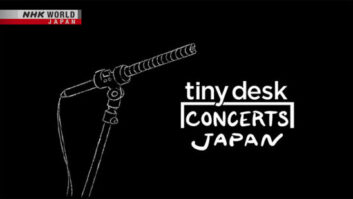For Radio Managers, the Impact of XM and Sirius Satellite Remains Uncertain
One afternoon a few years ago when I lived in Texas, the sky became an ominous shade of yellow. I stepped out on my front porch to watch as a funnel cloud developed. Instead of running for shelter, I stood there, mesmerized, and watched until a few minutes later the funnel dissipated.
I’m sharing that story because in many ways it reminds me of what’s going on with the debut of the XM and Sirius satellite radio services.
Conceptually, satellite radio has the potential to do great damage to the businesses of terrestrial radio broadcasters. But in its current state, it looks like the storm may blow over without doing any damage.
Not a bad idea …
From an innovative standpoint, satellite radio is a good idea, perhaps even a great one. It offers hundreds of format-specific channels, with little or no commercial interruption, and it’s available without pause from sea to shining sea.
I’m not alone in my enthusiasm about the concept. Clear Channel thought highly enough of XM Satellite Radio that it becane a major investor.
However, these are not the blue-sky ’90s we’re operating in anymore. There are a few hard lessons we’ve learned over the past two or three years: Diversify your portfolio. Get to the airport early. Curb your enthusiasm about great ideas.
The question right now is not whether XM Satellite Radio or Sirius Satellite Radio will wind up pirating off listeners and advertisers from terrestrial broadcasters. The more relevant question at this stage is, will they be around long enough to have the opportunity?
Skip Weller is president and chief operating officer for NextMedia Group, which owns 56 stations in 14 mostly mid-sized markets. He is not overly concerned about XM or Sirius until they prove they can remain viable, and even if they do, he doesn’t see them as a major competitive factor.
“I think that if they survive – and that’s a huge question because of the amount of money they’ve already put into it – they’ll have some impact. But it will be minimal,” he said.
Rocky start
Gregg Skall, an attorney with Womble, Carlyle, Sandridge & Rice PLLC in Washington has worked with many clients in the broadcasting business and keeps his eye on emerging technologies. He points out that if the satellite services take hold, they will enjoy certain advantages that their terrestrial counterparts aren’t allowed.
“Among the things that terrestrial broadcasters might say is that (satellite companies) have the ability to program a hundred-plus channels into any local community from a satellite, where the terrestrial broadcasters are limited to eight in any given community,” he said.
Yes, that’s possible. But again, traditional radio programmers aren’t losing any sleep over it. That’s primarily because there’s very little audience out there to date for these hundreds of channels to influence.
The initial projections for adoption of digital satellite radio are optimistic. Satellite Radio Investor, a publication of the Carmel Group, projected earlier this year that satellite radio would follow an eight-year growth path in excess of what was seen with direct broadcast satellite. It predicts that satellite will have more than 24 million subscribers by year eight. That’s 10 million more subscribers than DBS had in its first eight years.
While XM maintains that it is on track to hit 350,000 subscribers by year’s end, analysts recently reduced subscriber forecasts for Sirius from 100,000 to 78,000 for the year. Both companies have already issued warnings, which further crippled their already limping stocks. The warnings dragged the stocks to yearly lows in early August. XM, which opened the year at $17.04 per share, dropped to $2.72 during the week of Aug. 5. Sirius, which closed at $10.88 per share on Jan. 2, closed Aug. 2 at 76 cents.
In August, the companies filed warnings about low-cash positions with the Securities Exchange Commission. XM alerted investors that unless new funding comes in, it would run out of cash in the first quarter of next year and have to cease operations. Sirius reported that it needs to come up with $300 million by the middle of next year.
Gerry Boehme, senior vice president for strategic planning for Katz Media Group, said the low subscriber count could be devastating to the fundraising efforts.
“A considerable obstacle to raising the money is the slow adoption rates,” he said. “There’s no good track record to go back to see how acceptable this will be in the marketplace.”
Among the considerable obstacles to signing up subscribers is that it’s not just the service they have to sell to the marketplace – it’s the entire concept. Not only do they have to entice people to listen to what they offer, but even before they can do that, they have to convince them to spend between $300 and $400 for the equipment needed to listen.
“I know the satellite folks are concerned about adoption coming quick enough,” said Skall. “They’re trying to find ways to get the cost of the aftermarket receiver acquisition down. The receiver market is heavily focused on automobiles and they have to quickly get into the portable market. The receiver used for that is less-desirable and pretty expensive.”
Unlike terrestrial radio, the costs don’t stop with buying the listening equipment. Both services require subscriptions that add up to more than $100 a year – a minimal expense, but an expense nonetheless to anyone watching his or her budget.
Curious business
Unlike XM, which depends on advertising for a considerable part of its overall revenue, Sirius runs commercials on very few of its channels, depending on subscriber fees for the bulk of its revenue.
Katz’ Boehme said Sirius clearly is swimming against the current with this particular business model.
“In radio and in most media in general, the real money has been in advertiser-supported models instead of subscription-based models. We ran into this when we were talking to Internet broadcasters. Originally everybody was talking about targeted marketing and advertising. Then people started getting into subscription models,” Boehme said.
“There isn’t a track record of subscriber-based models in audio, so there isn’t anything to compare it to. XM is certainly a more well-rounded model because it has both.”
Boehme concedes the irony of having advertising on a subscription service.
“The argument would be ‘why pay for XM and hear commercials when you can get that from local-market radio?'” he said.
Ultimate impact
Right now, traditional broadcasters are looking at the satellite services in much the same way I watched the Texas funnel cloud. They’re intrigued, but not intimidated. Even as they struggle, XM will still be vying for advertising dollars and both services will be competing for the ears of listeners.
NextMedia’s Weller said, “To the people who like to experiment; to the people who really like certain genres of music that you can’t get everyday on a radio station, I think they’re going to like this. But that’s a small group of people. Can they support the capitalization of a company that’s over a billion dollars? I don’t think they can.”
So, will satellite radio have an impact on terrestrial radio? Probably. Eventually. But it’s difficult to say if it will be either of the two current companies making the impact.
At this point, the only impact terrestrials are likely to feel could be a positive one as XM and Sirius spend money to advertise their services in an attempt to lure subscribers.












